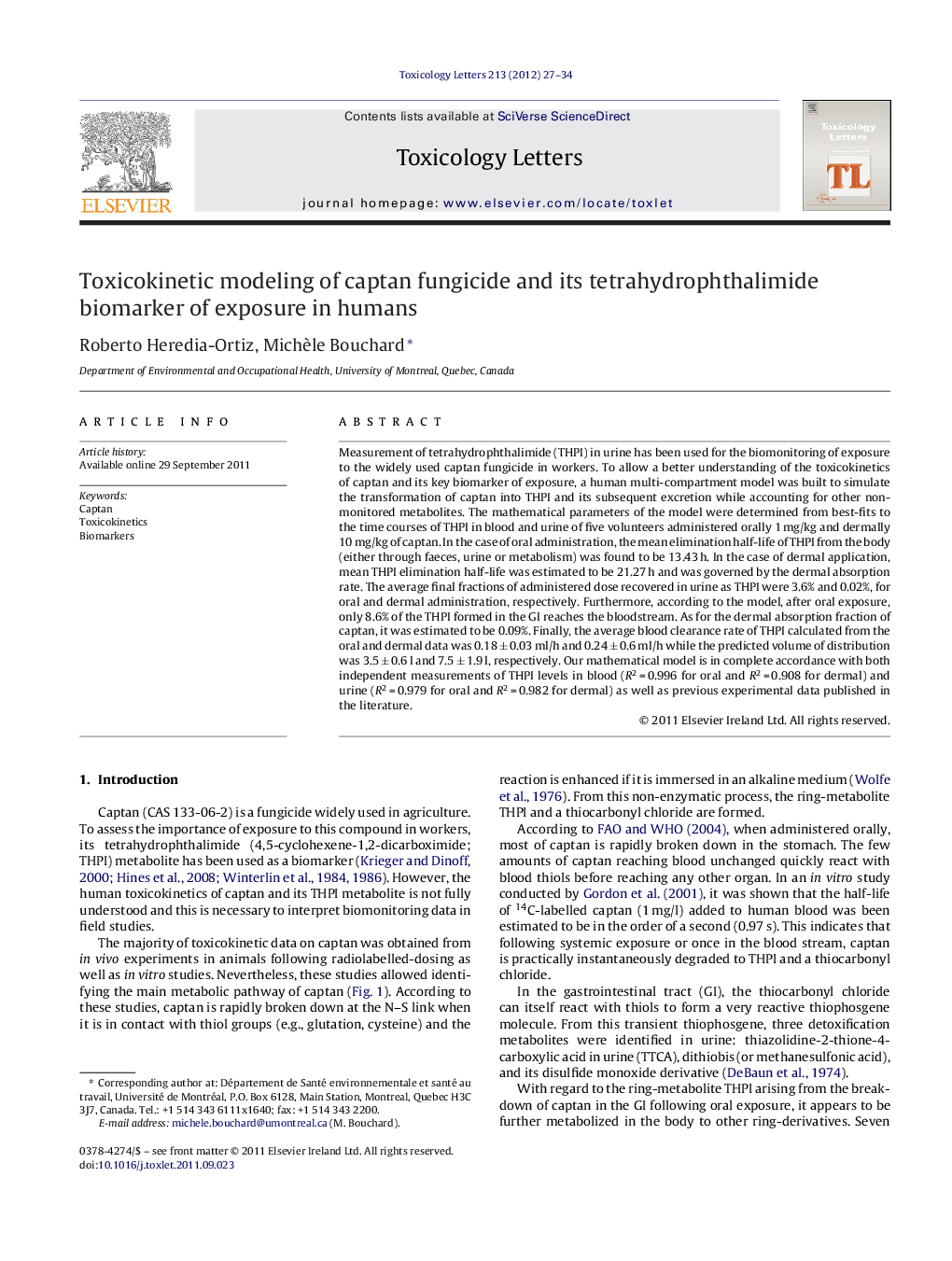| Article ID | Journal | Published Year | Pages | File Type |
|---|---|---|---|---|
| 2599478 | Toxicology Letters | 2012 | 8 Pages |
Measurement of tetrahydrophthalimide (THPI) in urine has been used for the biomonitoring of exposure to the widely used captan fungicide in workers. To allow a better understanding of the toxicokinetics of captan and its key biomarker of exposure, a human multi-compartment model was built to simulate the transformation of captan into THPI and its subsequent excretion while accounting for other non-monitored metabolites. The mathematical parameters of the model were determined from best-fits to the time courses of THPI in blood and urine of five volunteers administered orally 1 mg/kg and dermally 10 mg/kg of captan. In the case of oral administration, the mean elimination half-life of THPI from the body (either through faeces, urine or metabolism) was found to be 13.43 h. In the case of dermal application, mean THPI elimination half-life was estimated to be 21.27 h and was governed by the dermal absorption rate. The average final fractions of administered dose recovered in urine as THPI were 3.6% and 0.02%, for oral and dermal administration, respectively. Furthermore, according to the model, after oral exposure, only 8.6% of the THPI formed in the GI reaches the bloodstream. As for the dermal absorption fraction of captan, it was estimated to be 0.09%. Finally, the average blood clearance rate of THPI calculated from the oral and dermal data was 0.18 ± 0.03 ml/h and 0.24 ± 0.6 ml/h while the predicted volume of distribution was 3.5 ± 0.6 l and 7.5 ± 1.9 l, respectively. Our mathematical model is in complete accordance with both independent measurements of THPI levels in blood (R2 = 0.996 for oral and R2 = 0.908 for dermal) and urine (R2 = 0.979 for oral and R2 = 0.982 for dermal) as well as previous experimental data published in the literature.
► Tetrahydrophthalimide (THPI) in urine has been used for the biomonitoring of exposure to the widely used captan fungicide. ► A human multi-compartment model was built to simulate the transformation of captan into THPI and its subsequent kinetics. ► Kinetics of captan and its ring-metabolites were modeled for different routes-of-exposure: oral, dermal and inhalation. ► Only first-order transitions were required to simulate in vivo kinetics of captan ring-metabolites. ► The model is in accordance with published experimental data.
